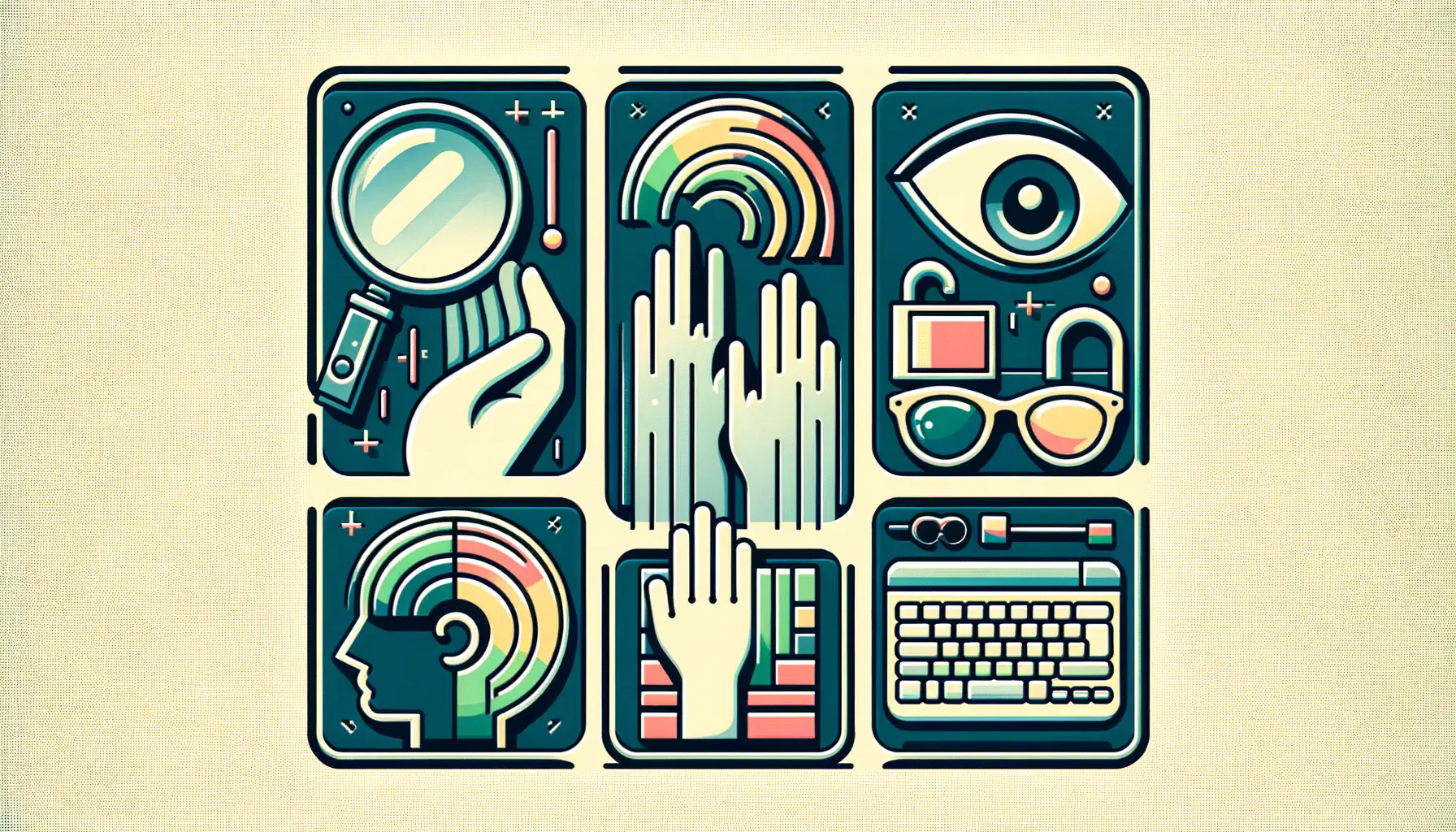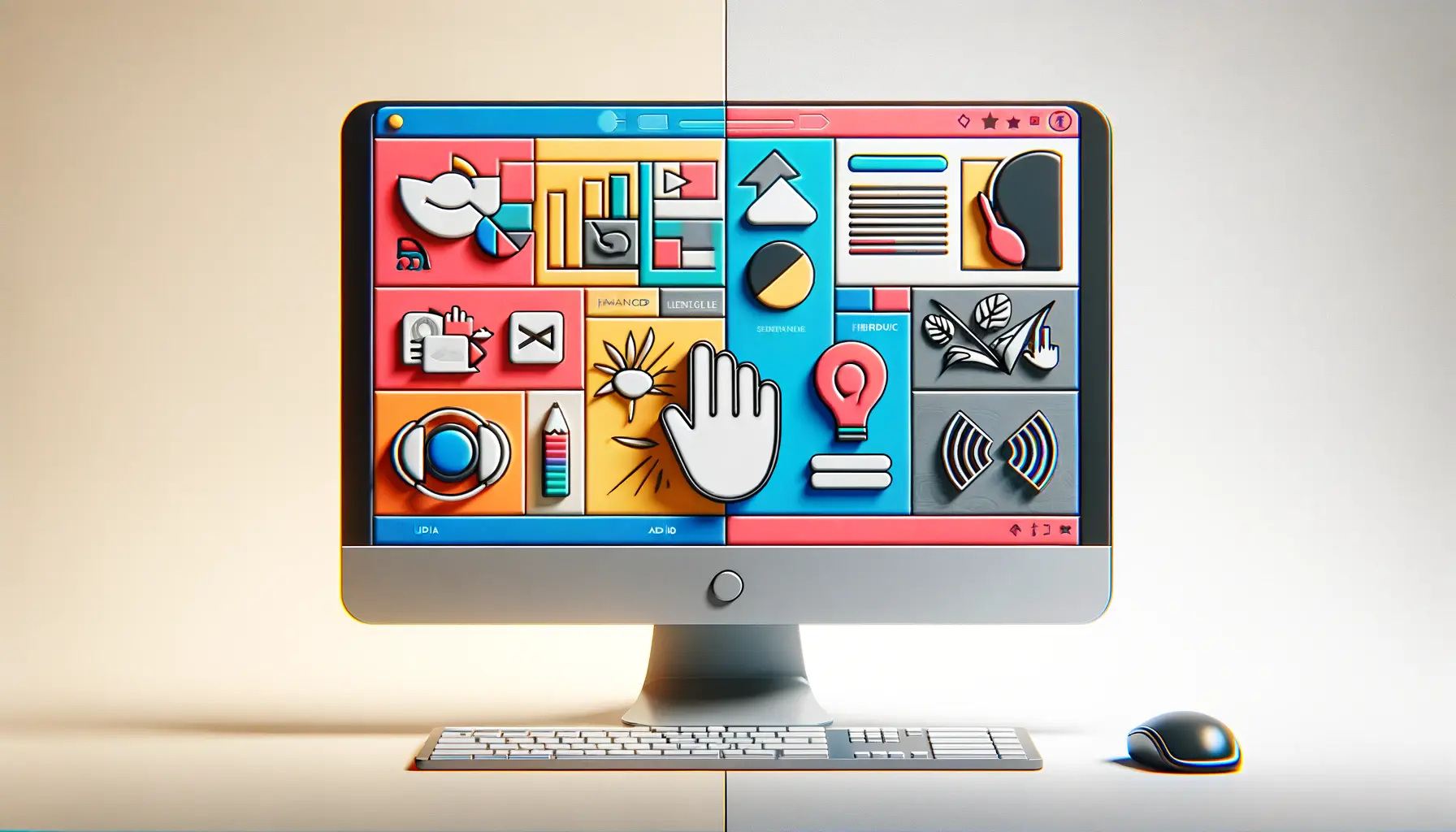Accessibility in technology is a critical aspect that determines its reach and usability across diverse user groups.
With the advent of OpenAI’s Sora, a groundbreaking platform designed to enhance digital interactions through advanced AI capabilities, the question of its accessibility comes to the forefront.
This article delves into the multifaceted dimensions of accessibility within Sora, examining whether it truly caters to everyone, regardless of their physical or cognitive abilities.
By exploring Sora’s features, design principles, and user interface, we aim to shed light on its inclusivity and the efforts made to ensure that it serves a wide audience effectively.
Accessibility is not just a feature but a fundamental right, enabling individuals from various backgrounds and with different needs to engage with technology on an equal footing.
Sora, as a product of OpenAI, stands at the intersection of innovation and user-centric design, promising to offer an array of services that could revolutionize how we interact with digital content.
However, the effectiveness of these innovations largely depends on their accessibility.
This exploration seeks to understand the depth of Sora’s commitment to accessibility, scrutinizing the balance it strikes between cutting-edge AI functionalities and the universal design principles that make technology accessible to all.
- Understanding Accessibility in Sora
- Enhancing User Experience Through Accessibility
- Challenges and Solutions in Accessibility
- Accessibility and AI: The Future of Inclusive Technology
- Global Accessibility Standards and Compliance
- Education and Accessibility: Empowering Users
- Accessibility as a Continuous Journey
- Embracing Accessibility: A Path Forward with Sora
- Sora’s Accessibility: Frequently Asked Questions
Understanding Accessibility in Sora
Designing for Everyone
The core philosophy behind Sora’s development is to create a platform that is inherently accessible.
This involves incorporating accessibility features right from the initial design phase, ensuring that the application is usable for people with disabilities, including those who rely on assistive technologies.
Sora’s approach to accessibility is rooted in the principles of universal design, aiming to make the platform usable by as wide a range of people as possible, without the need for adaptation or specialized design.
Key to this inclusivity is the implementation of features such as screen reader compatibility, keyboard navigation, and adjustable text sizes and colors.
These features are not just add-ons but are integrated into the very fabric of Sora, ensuring that the platform is more than just compliant with accessibility standards—it is genuinely designed with all users in mind.
By prioritizing these elements, Sora demonstrates a commitment to breaking down the barriers that often prevent individuals with disabilities from fully participating in the digital world.
Accessibility Features in Sora
Sora boasts a range of accessibility features designed to accommodate users’ diverse needs.
For instance, the platform supports screen readers and other assistive technologies, enabling visually impaired users to navigate its interface and engage with content seamlessly.
This compatibility is crucial for making Sora accessible, as it ensures that users can utilize their preferred tools to access information and services offered by the platform.
Moreover, Sora offers customizable display options, such as adjustable font sizes and color contrasts, catering to users with visual impairments or reading difficulties.
These features not only enhance usability for individuals with specific needs but also improve the overall user experience, making Sora a more versatile and user-friendly platform.
The inclusion of these accessibility options underscores Sora’s dedication to creating an inclusive environment where everyone can benefit from its advanced AI capabilities.
Accessibility is at the heart of Sora’s design, ensuring that the platform is inclusive and usable for everyone, including those with disabilities.
Enhancing User Experience Through Accessibility
The integration of accessibility features within Sora is not just about compliance or ticking off a checklist.
It’s about enhancing the overall user experience, making it more intuitive, efficient, and enjoyable for everyone.
This commitment to accessibility reflects a broader understanding of user diversity, recognizing the importance of accommodating a wide range of abilities and preferences in the design and functionality of technology platforms.
At its core, enhancing user experience through accessibility involves several key strategies:
- Intuitive Navigation: Ensuring that the platform can be easily navigated by all users, including those using keyboard shortcuts or assistive devices, is crucial. This means creating a logical structure that can be intuitively understood and interacted with, regardless of the user’s physical capabilities.
- Clear and Understandable Content: The content presented within Sora is designed to be clear and easily digestible. This includes the use of plain language, alternative text for images, and captions for videos, catering to users with different cognitive abilities and sensory impairments.
- Customizable Interface: Allowing users to customize their experience according to their needs and preferences is another way Sora enhances accessibility. This includes options for changing text size and color schemes to improve readability and reduce visual strain.
Feedback and Continuous Improvement
A key aspect of Sora’s approach to accessibility is the incorporation of user feedback into ongoing development processes.
By actively seeking input from a diverse user base, including individuals with disabilities, Sora can identify areas for improvement and continuously refine its features to better meet the needs of all users.
This feedback loop is essential for fostering an inclusive digital environment where everyone’s experience is valued and considered.
Furthermore, Sora’s commitment to continuous improvement in accessibility is evident in its regular updates and enhancements.
These updates are informed by the latest accessibility standards and guidelines, ensuring that the platform remains at the forefront of accessible technology.
By adapting to new developments and incorporating innovative solutions, Sora aims to set a benchmark for accessibility in digital platforms.
Incorporating user feedback and adhering to evolving accessibility standards are key strategies for enhancing the user experience in Sora.
Challenges and Solutions in Accessibility
While Sora’s commitment to accessibility is evident in its design and features, achieving universal accessibility is not without its challenges.
These challenges range from technical limitations to the diverse and evolving nature of user needs.
However, Sora’s approach to addressing these challenges is proactive and innovative, focusing on solutions that ensure the platform remains accessible to as wide an audience as possible.
One of the primary challenges in accessibility is keeping pace with the rapid evolution of technology and user expectations.
As new technologies emerge and users’ needs change, platforms like Sora must adapt quickly to remain relevant and accessible.
This requires a flexible and forward-thinking approach to design and development, as well as a commitment to ongoing learning and improvement.
- Adapting to New Technologies: Sora continuously integrates new technologies and features that enhance accessibility. This includes exploring AI-driven solutions to improve the user experience for individuals with disabilities, such as predictive text and voice recognition technologies.
- Addressing Diverse User Needs: Recognizing the wide range of abilities and preferences among users, Sora employs a user-centered design approach. This involves creating customizable features and options that allow users to tailor their experience according to their specific needs.
- Ensuring Compatibility: With the vast array of devices and assistive technologies used by individuals with disabilities, ensuring compatibility is a significant challenge. Sora addresses this by adhering to universal design principles and standards, making the platform compatible with a broad range of devices and software.
Collaboration and Community Engagement
A crucial element in overcoming accessibility challenges is collaboration with the disability community and other stakeholders.
Sora engages with users, accessibility experts, and organizations to gather insights and feedback that inform its accessibility strategy.
This collaborative approach not only helps identify and address specific challenges but also fosters a sense of community and shared purpose.
Moreover, Sora’s engagement with the broader community includes participation in accessibility forums, conferences, and initiatives.
These activities not only contribute to the platform’s continuous improvement but also raise awareness about the importance of accessibility in technology.
Through these efforts, Sora not only seeks to enhance its own accessibility but also to advocate for broader changes in the tech industry.
Collaboration with the disability community and ongoing engagement with accessibility initiatives are key to addressing and overcoming challenges in accessibility.
Accessibility and AI: The Future of Inclusive Technology
The integration of artificial intelligence (AI) with accessibility features represents a promising frontier for creating more inclusive technology.
Sora, with its foundation in OpenAI’s advanced AI research, is at the forefront of exploring how AI can enhance accessibility for users with disabilities.
This exploration is not just about leveraging AI to improve existing features but also about reimagining what is possible in making technology accessible to everyone.
AI has the potential to transform accessibility in several key ways:
- Personalization: AI can analyze user behavior and preferences to offer personalized accessibility options. This could mean adaptive interfaces that change based on the user’s needs or predictive text and voice commands that simplify navigation for users with mobility or cognitive impairments.
- Automation: AI-driven automation can assist users in completing tasks that might otherwise be difficult or impossible. For example, automatic captioning and audio descriptions can make multimedia content more accessible to users with hearing or visual impairments.
- Interaction: Advanced AI models can enable more natural and intuitive interactions with technology, breaking down barriers for users with disabilities. Voice-activated assistants and gesture recognition technologies are examples of how AI can create more accessible user experiences.
Overcoming Barriers with AI
While AI offers significant opportunities to enhance accessibility, its successful integration requires careful consideration of potential barriers.
These include ensuring that AI technologies themselves are accessible and that they do not inadvertently create new obstacles for users with disabilities.
Sora addresses these challenges by incorporating inclusive design principles into its AI development process, ensuring that AI features enhance rather than hinder accessibility.
Furthermore, the ethical use of AI in accessibility is a critical consideration.
This involves ensuring user privacy, security, and autonomy, especially when AI technologies collect and analyze personal data to offer personalized experiences.
Sora’s approach to AI and accessibility is guided by ethical standards that prioritize user rights and safety, setting a model for how AI can be used responsibly to create more inclusive technology.
AI has the potential to significantly enhance accessibility in technology, offering personalized, automated, and more intuitive user experiences for individuals with disabilities.
Global Accessibility Standards and Compliance
Adhering to global accessibility standards is crucial for ensuring that technology platforms like Sora are accessible to users worldwide.
These standards, such as the Web Content Accessibility Guidelines (WCAG), provide a framework for creating digital content and technologies that are usable by people with a wide range of disabilities.
Compliance with these standards is not just about legal obligation; it’s a commitment to inclusivity and ensuring equal access to technology for everyone.
Sora’s approach to global accessibility standards involves:
- Continuous Monitoring: Keeping abreast of the latest developments and updates in accessibility standards to ensure that Sora remains compliant and up-to-date with best practices.
- Implementation: Integrating accessibility standards into the design and development process, from the initial concept to the final product, ensuring that all aspects of Sora meet or exceed these guidelines.
- User Testing: Conducting thorough testing with users who have disabilities to identify any areas where Sora can improve in terms of accessibility and usability.
Collaboration with International Bodies
Collaboration with international bodies and organizations dedicated to accessibility is another key aspect of Sora’s strategy.
By working closely with these groups, Sora gains insights into the diverse needs of users around the world and the best practices for meeting those needs.
This collaborative approach helps ensure that Sora’s accessibility features are not only compliant with global standards but also aligned with the real-world experiences of users with disabilities.
Moreover, Sora’s commitment to global accessibility standards reflects a broader goal of promoting inclusivity and accessibility in the tech industry as a whole.
By setting a high standard for compliance and advocating for universal design principles, Sora contributes to a more accessible digital landscape, where technology serves as a tool for empowerment and inclusion for all users, regardless of their abilities.
Adherence to global accessibility standards and collaboration with international bodies are crucial for ensuring that Sora is accessible and inclusive for users worldwide.
Education and Accessibility: Empowering Users
The role of education in enhancing accessibility cannot be overstated.
For platforms like Sora, providing resources and training on accessibility features is essential for empowering users to make the most of the technology.
This educational approach not only helps users understand how to utilize accessibility options but also raises awareness about the importance of inclusivity in digital spaces.
Sora’s educational initiatives include:
- Comprehensive Guides: Offering detailed guides and tutorials that explain how to use Sora’s accessibility features. These resources are designed to be easily understandable, catering to users of all skill levels.
- Workshops and Webinars: Conducting workshops and webinars that provide hands-on training and insights into making the most of Sora’s inclusive design. These sessions are aimed at both users and developers, fostering a community of practice around accessibility.
- Collaboration with Educational Institutions: Partnering with schools, universities, and other educational institutions to integrate Sora into their curricula and support services. This collaboration ensures that students with disabilities have access to the tools they need to succeed academically.
Building a Community Around Accessibility
Beyond individual education, Sora is committed to building a community around accessibility.
This involves creating forums and platforms where users, developers, and accessibility advocates can share experiences, challenges, and solutions.
By fostering a vibrant community, Sora not only enhances its own accessibility features but also contributes to the broader dialogue on inclusivity in technology.
This community-centric approach also enables Sora to gather valuable feedback and insights directly from users, which inform ongoing development and improvement of the platform.
Engaging with the community in this way demonstrates Sora’s commitment to not just providing accessible technology, but also to supporting an inclusive digital culture where everyone’s voice is heard and valued.
Education and community engagement are key to empowering users and promoting inclusivity, making accessibility a shared responsibility and goal.
Accessibility as a Continuous Journey
Accessibility is not a one-time achievement but a continuous journey of improvement and adaptation.
For platforms like Sora, this means constantly evolving to meet the changing needs of users and to incorporate new technologies and methodologies that enhance accessibility.
It’s a commitment to innovation, inclusivity, and user empowerment that drives Sora’s ongoing development.
The journey of accessibility involves several key elements:
- Proactive Adaptation: Actively seeking out new technologies and approaches that can improve accessibility. This includes staying ahead of industry trends and incorporating feedback from users and accessibility experts.
- Inclusive Design: Ensuring that accessibility is considered at every stage of the design and development process. This commitment to inclusive design means that Sora is built with the needs of all users in mind, from the outset.
- Community Engagement: Maintaining an open dialogue with the community of users, developers, and advocates. This engagement is crucial for understanding the diverse needs of users and for fostering an inclusive digital environment.
Looking Towards the Future
As Sora looks towards the future, the platform’s commitment to accessibility remains a core principle guiding its development.
By embracing accessibility as a continuous journey, Sora is poised to remain at the forefront of inclusive technology, breaking down barriers and creating opportunities for users of all abilities.
The future of accessibility in technology is bright, and Sora is leading the way with innovative solutions that empower users and promote inclusivity.
In conclusion, Sora’s approach to accessibility is comprehensive, proactive, and centered on the user.
Through continuous improvement, education, and community engagement, Sora is not just a platform but a movement towards a more accessible and inclusive digital world.
The journey of accessibility is ongoing, and Sora is committed to being a leader every step of the way, ensuring that technology is accessible and empowering for everyone.
Accessibility is an ongoing journey, requiring continuous improvement, proactive adaptation, and a commitment to inclusive design and community engagement.
Embracing Accessibility: A Path Forward with Sora
In the realm of digital innovation, accessibility stands as a beacon of inclusivity, guiding the development of technologies that cater to every user.
Sora, with its foundation in OpenAI’s pioneering AI research, exemplifies this commitment to accessibility, demonstrating that advanced technology can and should be accessible to everyone.
This article has traversed the multifaceted landscape of accessibility within Sora, shedding light on its inclusive features, challenges, and the continuous journey towards a more accessible digital world.
Key Takeaways on Accessibility in Sora
The exploration of Sora’s accessibility reveals several key insights:
- Accessibility is integral to Sora’s design philosophy, ensuring that the platform is usable and enjoyable for a diverse user base, including those with disabilities.
- Continuous improvement and adaptation to new technologies are central to Sora’s approach to accessibility, reflecting a commitment to staying at the forefront of inclusive technology.
- Education and community engagement play crucial roles in enhancing accessibility, empowering users, and fostering an inclusive digital culture.
The Future of Accessibility with Sora
Looking ahead, the future of accessibility in technology is bright, with Sora leading the charge.
The platform’s commitment to continuous improvement, user-centered design, and ethical AI use sets a high standard for accessibility in the digital age.
As Sora evolves, it will undoubtedly continue to break down barriers and open up new possibilities for users of all abilities, making the digital world more accessible and inclusive for everyone.
In conclusion, Sora’s journey in accessibility is a testament to the power of technology to create a more inclusive society.
By prioritizing accessibility, Sora not only enhances the user experience for individuals with disabilities but also enriches the digital ecosystem for all users.
As we move forward, the lessons learned from Sora’s approach to accessibility will undoubtedly influence the broader tech industry, encouraging a shift towards more inclusive and accessible technology solutions.
In the end, accessibility in Sora is not just about compliance or functionality; it’s about building a digital world where everyone, regardless of their abilities, can thrive.
Sora’s Accessibility: Frequently Asked Questions
Explore common inquiries about Sora’s accessibility features and how they ensure an inclusive experience for all users.
Sora supports ChromeVox, VoiceOver, NVDA, JAWS, and Android Accessibility Suite, ensuring wide compatibility for visually impaired users.
Sora allows users to enable dyslexic font from the accessibility settings, making reading easier for dyslexic users.
Yes, Sora offers a high contrast mode to improve readability for users with visual impairments, accessible via the app’s settings.
No library card is needed for Sora; access is granted through school login credentials like Google, Clever, or ClassLink.
Sora provides screen reader support, adjustable text sizes and colors, and dyslexic font options to cater to various needs.
By adhering to WCAG guidelines, Sora ensures content is accessible through features like skip links, alt text, and logical navigation.
Yes, Sora allows users to adjust the playback speed of audiobooks, enhancing the listening experience for all users.
‘Read From Here’ mode can be enabled through the accessibility settings in Sora, facilitating a continuous reading experience with screen readers.













